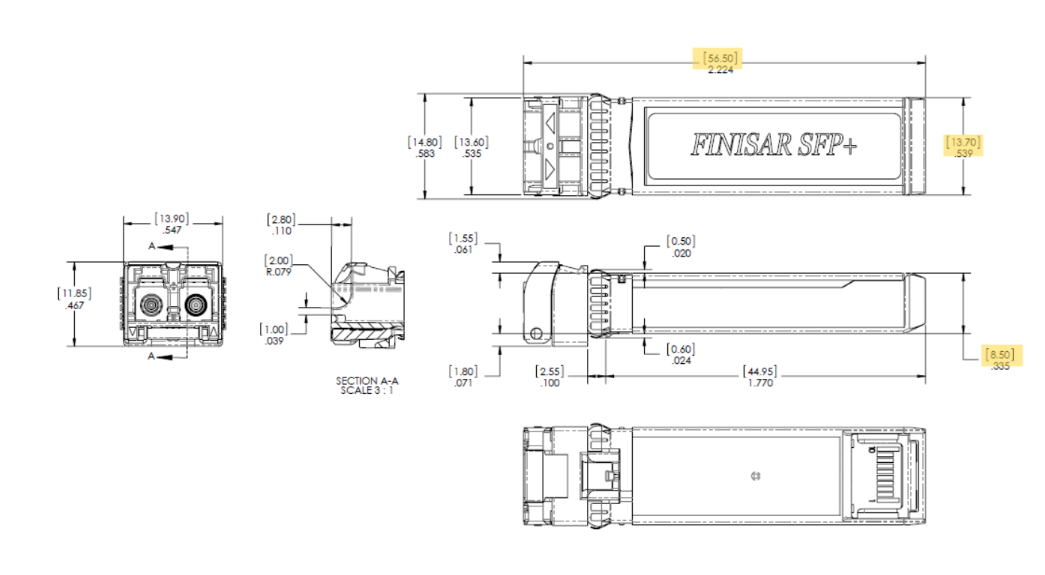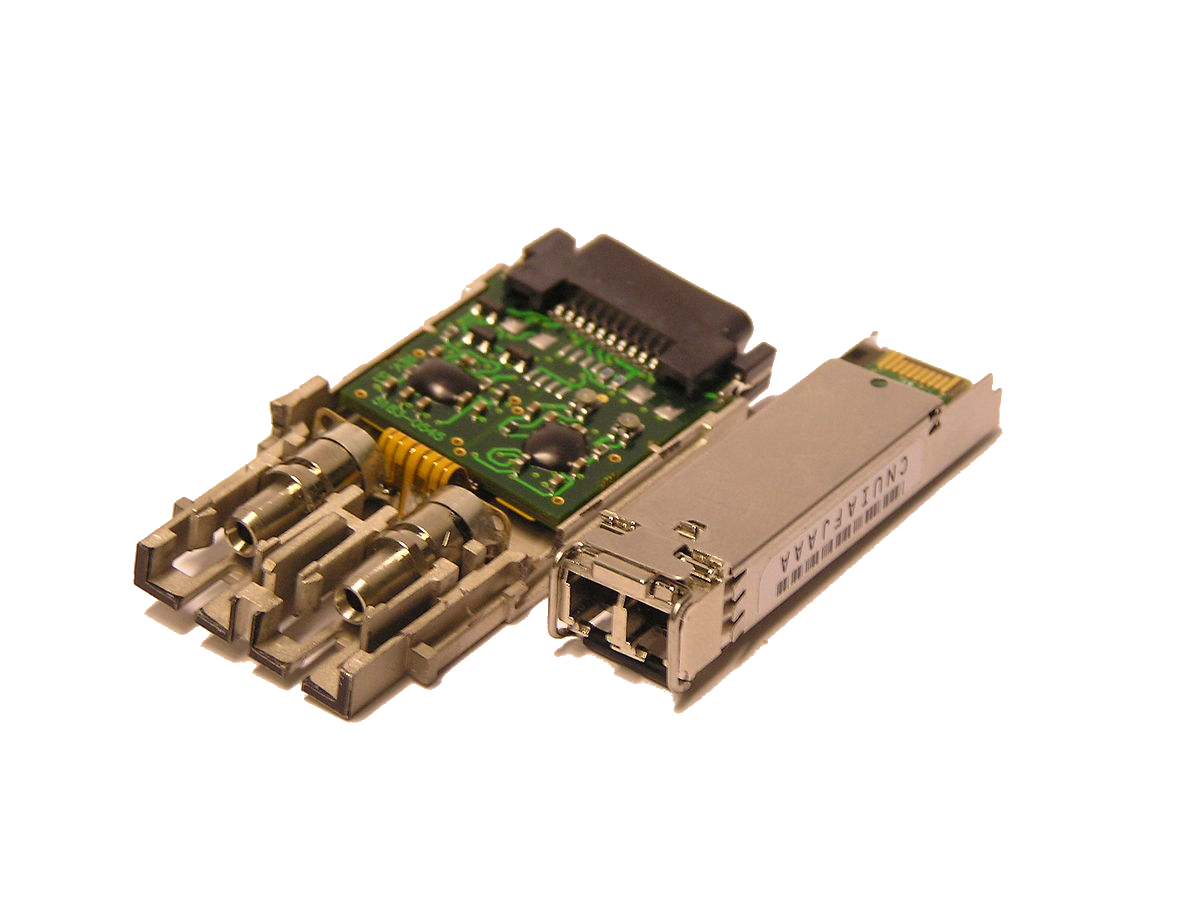
Rising investments in the space industry has created greater demand for microelectronics usable in space vehicles. However, designing microelectronic components is challenging, due to the harsh environment, along with stringent weight and size constraints. This work focuses on designing a test protocol for an off-the-shelf component, the FTLX8574D3BCV Multimode 10G SFP+ optical transceiver, to measure its susceptibility to ionizing radiation and charged particles. Preliminary results suggest that combining high atomic-number materials (e.g., tungsten) to shield gamma radiation with complementary layers containing boron for neutron moderation can reduce the total shielding mass, compared to previously published shield designs. These findings offer an alternative solution for designing space-capable transceivers to allow for high-speed data transmission at low bit error rates. By evaluating an off the shelf component for space applications, this research presents a cost-effective option that may help reduce testing costs and accelerate qualification time for new parts, which is greatly needed in the growing space industry today.
All modern digital communication relies on the transmission of data as a series of ones and zeros. These binary signals are interpreted for various cases from kitchen appliances to rocket systems. Engineers have historically relied on copper wiring to communicate these signals. However, in the harsh environment of space, ionizing radiation from protons, heavy ions, and high energy photons [3] can affect the integrity of copper wiring. This degradation may lead to potential failures in critical systems.
A new and promising approach lies in the field of photonics in which light is used as the medium for relaying data instead of electrical currents. Optical transmission can reduce the weight, and can be more robust against certain types of radiation acting as an alternative. The FTLX8574D3BCV Multimode 10G SFP+ optical transceiver is one example of a photonic device. It converts electrical signals into optical signals and vice versa which allows for high speed data transmission, critical for space applications.
We used Transport of Ions in Matter (TRIM) software to evaluate the performance of the FTLX8574D3BCV off-the-shelf transceiver when exposed to charged particle radiation. Additionally, we identified multiple shielding candidates that can improve the transceiver’s baseline performance. This approach helps us develop a robust qualification method for future space missions.
From figure 1, we identified three dimensions of significance, highlighted below. The length of this transceiver is 56.50 mm, the width is 13.70 mm, and the height is 8.50mm. From this, we build initial incidence testing to demonstrate the effectiveness of our shielding candidates. Although we went through multiple iterations, described below is the most recent baseline modeling of the transceiver. It’s important to note that all of the below are approximations based on research done as we was unable to find a detailed manufacturing datasheet for the internal components as they’re likely proprietary.

From this diagram, we identified three key dimensions: the transceiver's length is 56.50 mm, its width is 13.70 mm, and its height is 8.50 mm. We used these measurements to conduct initial incidence testing to evaluate the effectiveness of our shielding candidates. Although we went through multiple iterations, it's important to note that all the details mentioned are approximations.
(Beam path thickness = 8.5 mm) [1]
Notes on the incidence model: Approximately 0.6 mm remains unaccounted for, which may be due to the presence of an air gap or potential inaccuracies in the estimates.

MeV.png)
MeV.png)
MeV.png)
Weight Constraints: The transceiver has a specific cross-section that we need to consider when designing the shielding thickness. We want to maintain an equal thickness at most but hope to improve or lessen it to decrease the overall weight.
Thermal Constraints: The FTLX8574D3BCV dissipates up to ~1 W of heat. Enclosing it in an insulating material (like a plastic shield) could cause overheating. Shield designs should allow heat to escape. For example, using thermally conductive layers or ensuring some metal surface is exposed to radiate heat.
Structural Considerations: Pure polyethylene can outgas or be flammable [5], so in space, it often needs encapsulation. Encapsulating a polymer shield in a thin metallic foil (e.g., aluminum or steel) can provide a barrier against outgassing and also add rigidity.
“The Graded-Z Approach”
In this research we will take a graded Z approach to building shielding candidates for the transceiver. Foundationally, we will use a dense high Z layer in conjunction with hydrogenous low-Z layers. The high-Z material will absorb and scatter most gamma rays and electrons (and also slow down some fraction of protons), while the low-Z material will thermalize and absorb the secondary radiation (like neutrons, lower-energy X-rays) and further slow any charged particles that penetrated the first layer. By “layering” in this way, we can avoid the buildup of dangerous secondary particles that a thick single-material shield would create. [6]
We plan to demonstrate the efficacy of a high Z layer, between two lower Z materials. This low, high, low layering method has been tested to lessen electron penetration by over 60% [6]. Additionally, we will model neutron-absorbing dopants such as boron, lithium, or beryllium. NASA has identified these strategies as being effective in mitigating secondary neutron effects from shielding.
The following materials have been identified as potential shielding candidates, selected for their promise in significantly reducing particle penetration under high energy exposure conditions:
_(10)MeV_Group(1).png)
_(50)MeV_Group(1).png)
_(10)MeV_Group(1).png)
_(50)MeV_Group(1).png)
_(10)MeV_Group(1).png)
_(50)MeV_Group(1).png)
_(10)MeV_Group(1).png)
_(50)MeV_Group(1).png)